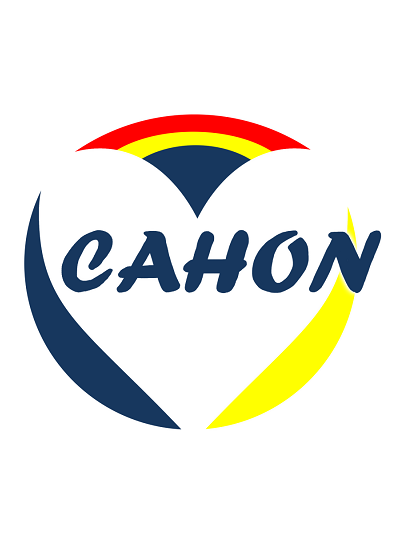Results of a phase 1/2 study of sacituzumab tirumotecan in patients with unresectable locally advanced or metastatic solid tumors refractory to standard therapies
IF 29.5
1区 医学
Q1 HEMATOLOGY
引用次数: 0
Abstract
Sacituzumab tirumotecan (sac-TMT) is an antibody–drug conjugate composed of an anti-TROP2 monoclonal antibody coupled to a cytotoxic belotecan-derived topoisomerase I inhibitor (KL610023) via a novel linker. We report results from the phase 1 dose-escalation cohorts in advanced solid tumors and phase 2 expansion cohorts for metastatic triple-negative breast cancer (TNBC) from the first-in-human MK-2870-001 (KL264-01) study (NCT04152499). Patients had unresectable locally advanced/metastatic solid tumors refractory to standard therapies. In the phase 1 dose-escalation cohorts, patients had unresectable locally advanced/metastatic solid tumors refractory to standard therapies. Sac-TMT was administered by intravenous administration every 2 weeks at 2 to 12 mg/kg. In phase 2, patients with TNBC and HR+/HER2− breast cancer received sac-TMT per recommended doses for expansion (RDEs) identified in phase 1. Primary objectives were determining maximum tolerated dose (MTD) of sac-TMT and establishing RDEs (phase 1) and determining ORR per RECIST v1.1 by investigator assessment (phase 2). Adverse events were assessed per NCI-CTCAE version 5.0. Thirty patients were enrolled in phase 1 and received sac-TMT 2 mg/kg (n = 4), 4 mg/kg (n = 7), 5 mg/kg (n = 7), 5.5 mg/kg (n = 5), and 6 mg/kg (n = 7). Five patients had dose-limiting toxicities: grade 3 stomatitis at 4, 5.5, and 6 mg/kg; grade 3 rash at 5 mg/kg; and grade 3 urticaria at 6 mg/kg. MTD was 5.5 mg/kg and RDEs were 4 and 5 mg/kg. In the phase 2 dose expansion, ORR (95% CI) was 34.8% (16.4%, 57.3%) in the 4-mg/kg group (n = 23) and 38.9% (23.1%, 56.5%) in the 5-mg/kg group (n = 36) for TNBC. ORR (95% CI) was 31.7% (18.1%, 48.1%) for HR+/HER2− breast cancer (n = 41). Sac-TMT demonstrated manageable safety profile in patients with unresectable locally advanced/metastatic solid tumors and promising antitumor activity in metastatic TNBC and HR+/HER2 − breast cancer. Sac-TMT is being investigated in phase 3 studies. ClinicalTrials.gov, NCT04152499.sacituzumab替鲁莫替康治疗对标准治疗难以切除的局部晚期或转移性实体瘤的1/2期研究结果
Sacituzumab替鲁莫替康(Sacituzumab tirumotecan, sact - tmt)是一种抗体-药物偶联物,由抗trop2单克隆抗体通过一种新的连接体偶联到细胞毒性贝罗替康衍生的拓扑异构酶I抑制剂(KL610023)组成。我们报告来自首个人体MK-2870-001 (KL264-01)研究(NCT04152499)的晚期实体瘤的1期剂量递增队列和转移性三阴性乳腺癌(TNBC)的2期扩展队列的结果。患者有不可切除的局部晚期/转移性实体瘤,对标准治疗难治。在1期剂量递增队列中,患者患有不可切除的局部晚期/转移性实体瘤,对标准治疗难治。Sac-TMT每2周静脉给药,剂量为2 ~ 12mg /kg。在第二阶段,TNBC和HR+/HER2 -乳腺癌患者按照第一阶段确定的推荐剂量(RDEs)接受了sac-TMT。主要目标是确定sac-TMT的最大耐受剂量(MTD),建立rde(1期),并通过研究者评估确定RECIST v1.1的ORR(2期)。不良事件按照NCI-CTCAE 5.0版本进行评估。30例患者入组1期,分别接受2mg /kg (n = 4)、4mg /kg (n = 7)、5mg /kg (n = 7)、5.5 mg/kg (n = 5)和6mg /kg (n = 7)的sac-TMT治疗。5例患者出现剂量限制性毒性:4、5.5和6 mg/kg时的3级口炎;5 mg/kg 3级皮疹;3级荨麻疹剂量为6mg /kg。MTD为5.5 mg/kg, rde分别为4和5 mg/kg。在2期剂量扩大中,4 mg/kg组(n = 23)的ORR (95% CI)为34.8% (16.4%,57.3%),5 mg/kg组(n = 36)的ORR (95% CI)为38.9%(23.1%,56.5%)。HR+/HER2−乳腺癌的ORR (95% CI)为31.7% (18.1%,48.1%)(n = 41)。Sac-TMT在不可切除的局部晚期/转移性实体瘤患者中具有可控的安全性,在转移性TNBC和HR+/HER2 -乳腺癌中具有良好的抗肿瘤活性。Sac-TMT正在进行3期研究。ClinicalTrials.gov NCT04152499。
本文章由计算机程序翻译,如有差异,请以英文原文为准。
求助全文
约1分钟内获得全文
求助全文
来源期刊
CiteScore
48.10
自引率
2.10%
发文量
169
审稿时长
6-12 weeks
期刊介绍:
The Journal of Hematology & Oncology, an open-access journal, publishes high-quality research covering all aspects of hematology and oncology, including reviews and research highlights on "hot topics" by leading experts.
Given the close relationship and rapid evolution of hematology and oncology, the journal aims to meet the demand for a dedicated platform for publishing discoveries from both fields. It serves as an international platform for sharing laboratory and clinical findings among laboratory scientists, physician scientists, hematologists, and oncologists in an open-access format. With a rapid turnaround time from submission to publication, the journal facilitates real-time sharing of knowledge and new successes.

 求助内容:
求助内容: 应助结果提醒方式:
应助结果提醒方式:


